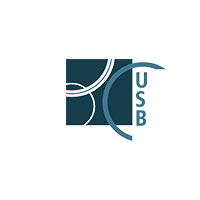Kleipaß, Franziska Marisa
(2025).
Facilitating Humanized Mouse Models to Study Novel HIV-1 Prevention Compounds.
PhD thesis, Universität zu Köln.

|
PDF
2025-02-26_Thesis_FMK_without_sign.pdf - Submitted Version Download (5MB) |
Abstract
The ongoing HIV-1 pandemic still remains without an effective vaccine, implying the need for novel prevention strategies. Given the predominance of mucosal transmission, recent approaches include targeting HIV-1 at the site of infection with small molecules such as nanobodies. Nanobodies formed by Camelidae spp. are the smallest natural functional antibody fragments, exhibiting favourable features as anti-HIV-1 agents including long CDR3 loops, small size, acid stability and bacterial expression capability. Animal models and humanized mice (huMice) in particular, are essential and currently irreplaceable in preclinical HIV-1 research. HuMice consist of an immunodeficient mouse strain harbouring a human immunograft with the human reconstitution varying significantly between different models. However, a reliable mucosal HIV-1 susceptibility currently requires the use of human foetal tissue, raising legal, ethical and technical obstacles. This work addresses the unmet need for a foetal-tissue-independent model by presenting and characterizing the novel CD34T+ mouse model. Furthermore the new model is employed to test the preventive potential of an HIV-1 specific nanobody in an in vivo setting. The CD34T+ model is a modification of an existing model based on an NOD.Cg-Rag1tm1Mom Il2rgtm1Wjl/SzJ (NRG) background engrafted with human hematopoietic cord blood stem cells. We enhanced human reconstitution by administrating of donor-matched mononuclear cells and human IL-7. Peripheral blood as well as distinct organ tissue flow cytometry confirmed consistently enhanced human T cell reconstitution, which led to significantly higher rectal HIV-1 susceptibility. We employed the model to assess the in vivo HIV-1 prevention potential of the broadly neutralizing nanobody VHH A6. CD34T+ mice were challenged intrarectally with HIV-1 alongside either VHH A6 or an non-specific nanobody. Sequential blood viral load measurements for 6 weeks showed a significant protective potential of VHH A6. The novel CD34T+ mouse model offers a foetal tissue-independent in vivo platform with reliable mucosal susceptibility. This first in vivo investigation further supports nanobody-mediated passive immunity as a promising strategy, warranting further exploration.
| Item Type: | Thesis (PhD thesis) | ||||||||||||||||||||||||
| Translated title: |
|
||||||||||||||||||||||||
| Creators: |
|
||||||||||||||||||||||||
| URN: | urn:nbn:de:hbz:38-752807 | ||||||||||||||||||||||||
| Date: | 2025 | ||||||||||||||||||||||||
| Language: | English | ||||||||||||||||||||||||
| Faculty: | Faculty of Medicine | ||||||||||||||||||||||||
| Divisions: | Faculty of Medicine > Virologie > Institut für Virologie | ||||||||||||||||||||||||
| Subjects: | Natural sciences and mathematics Medical sciences Medicine |
||||||||||||||||||||||||
| Uncontrolled Keywords: |
|
||||||||||||||||||||||||
| Date of oral exam: | 6 November 2024 | ||||||||||||||||||||||||
| Referee: |
|
||||||||||||||||||||||||
| Refereed: | Yes | ||||||||||||||||||||||||
| URI: | http://kups.ub.uni-koeln.de/id/eprint/75280 |
Downloads
Downloads per month over past year
Export
Actions (login required)
 |
View Item |
